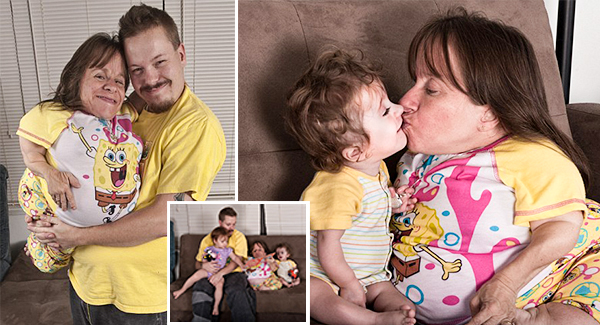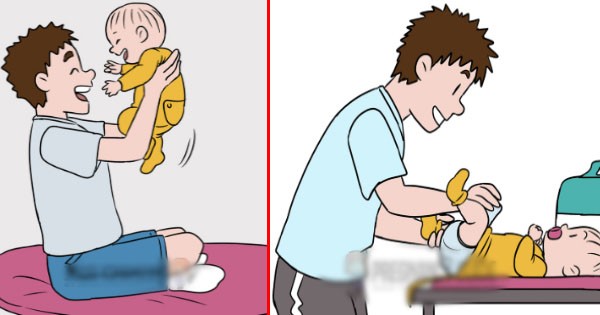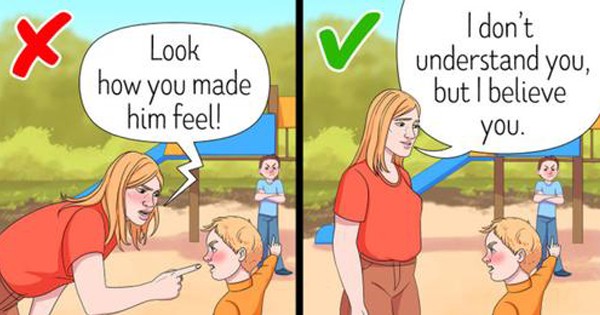
It’s a common scene. A child nervously walks to the front of a diving board, looks down, and becomes overcome with fear. He or she wants to escape: flee the diving board, the pool, summer in general.

A parent or guardian sees what’s going on and the most natural impulse takes over. They scream at the frightened child, “You’ll be fine! Just jump!” The child looks at the supposedly all-knowing adult and thinks, “Are you nuts?!”
Adults do know the truth. They know the child will be fine. They know the little boy or girl will most likely have so much fun jumping off the diving board that it will cause a tantrum when it is time to leave the pool.
The parent is thinking, “Jump already. You will love it! I was scared of diving boards once too but I learned it wasn’t so bad.”
But the child is thinking, “This is so far. I might get hurt. I might die! I am so scared.”
Without intending to, the parent is completely invalidating the child’s perspective of the situation. Through this invalidation, the child may start thinking, “What is wrong with me. I must be stupid to be scared. My mom/dad is so mad at me right now.” Not exactly what the parent intended is it?
Other forms of invalidation include statements such as:
- “Don’t be so dramatic.”
- “You didn’t mean that.”
- “Don’t worry about it.”
- “See, that wasn’t so bad.”
So how does this invalidation arise? A couple of factors may be at play. For one, the parent may truly not understand the child’s perspective. Years of living have clouded remembering how innocent and naive a child’s mind is. If you have been an avid diver and made the varsity team in high school, you may not relate to your child’s perfectly natural fear.
Another reason is the parent may have decided long ago that it is “better” or “right” to avoid fear and anxiety, thus creating black-and-white situations that the child must live up to. A very basic reaction to something new, jumping from a high point, becomes unheard of because the child should live up to the parent’s expectations.
A final point is the parent’s own feelings become triggered when they see their child’s anxiety or sadness. If the parent has a history of brushing off their own difficult feelings, they are more likely to do the same to their child. A parent may push their child harder to relieve their own feelings of inadequacy or anxiety.
In order to change an invalidating environment to one that promotes a child’s ability to self-regulate, try to show a true understanding of the child’s perspective. No longer do you say, “You’ll be fine” but instead acknowledge the fear. “It looks far from the diving board, doesn’t it? I wonder if you worry about getting hurt when you hit the water. I remember being scared the first time I jumped off a diving board too.” Other forms of validating statements include:
- “I can understand how that might be scary.”
- “It’s OK to feel upset.”
- “Tell me more about what you are thinking.”
- “I can see how you reacted as you did. Maybe next time there is a different approach?”
These types of statements help your child understand that their feelings are okay. Not only are they OK, but they are also typical! By exploring the feelings of your child, you are actually helping them accept their emotions and find ways to move past the discomfort. You are allowing your child to problem solve, experiment, and explore their environment without shame.
Most likely your child will be fine. But in the moment, that’s the last thing they want to hear.


















































